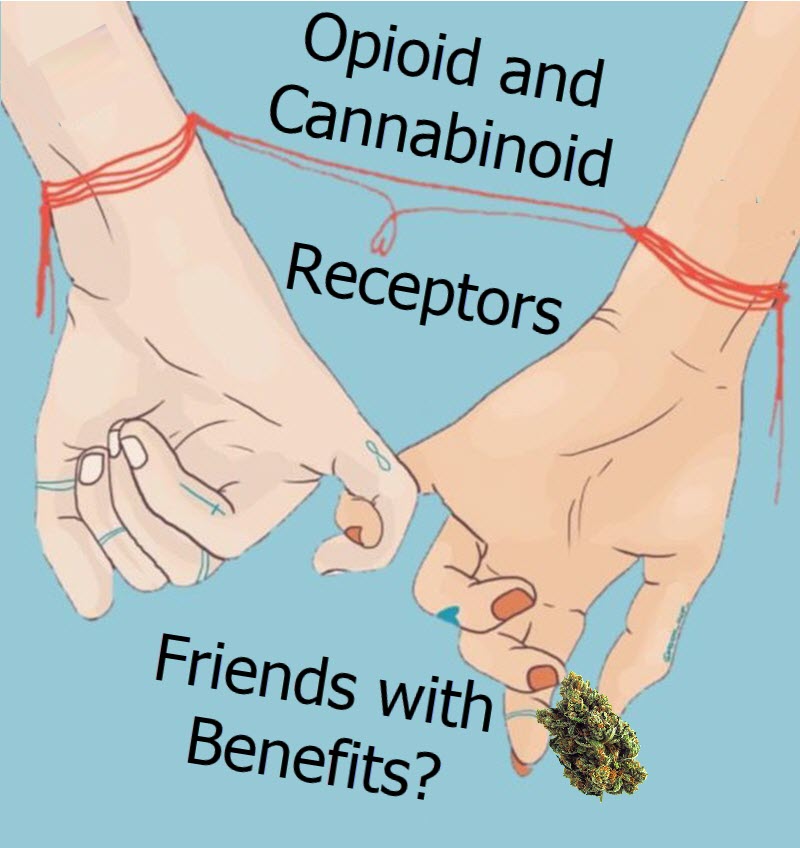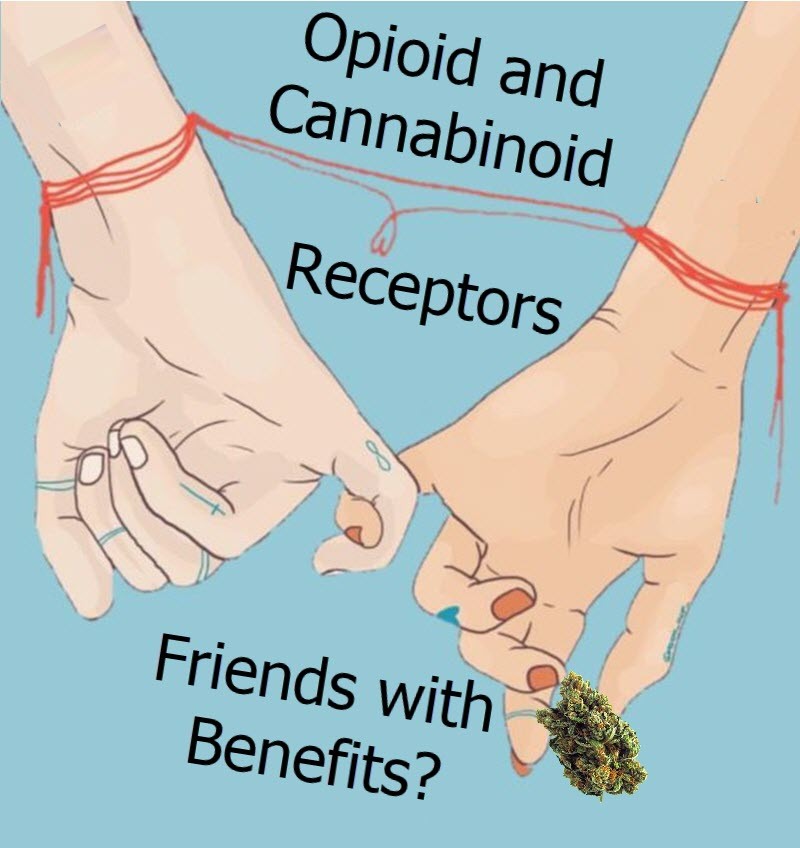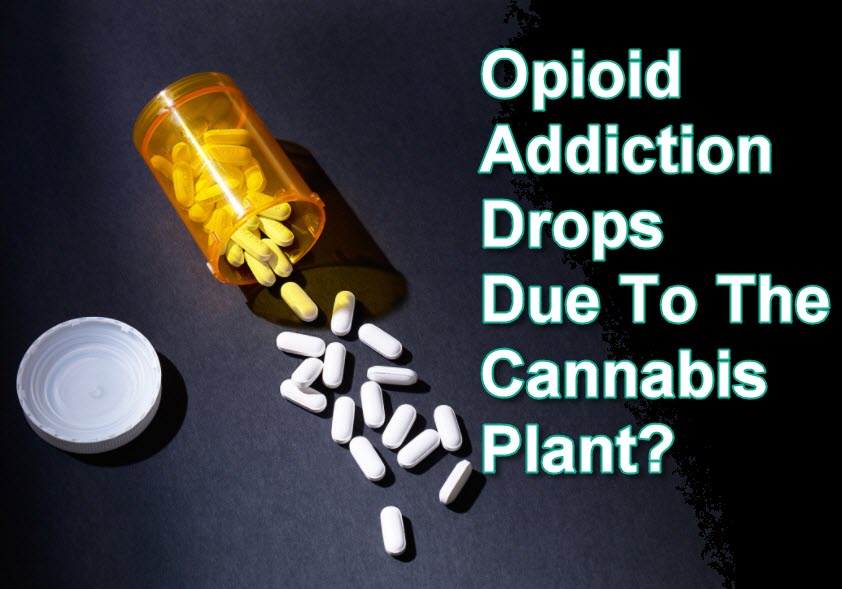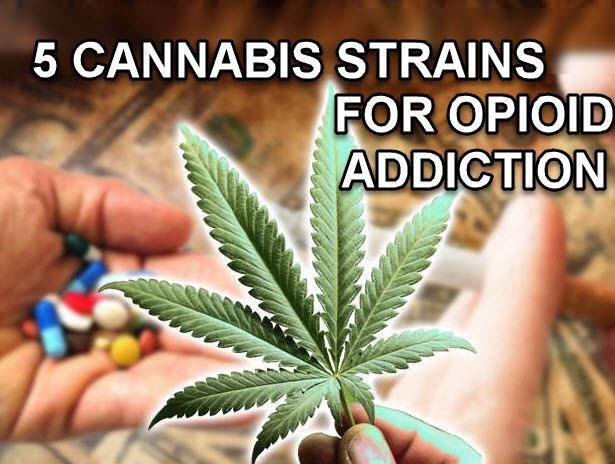Are Opioid and Cannabinoid Receptors Friends with Benefits?

For a very long time, because of the illegality of cannabis, opioids were used to control all sorts of medical conditions. But before that, both were equally used to treat many medical conditions, and also for recreational purposes. Both cannabis and opioids derive from plants and serve a purpose as medicine. But only in the later years of the 20th century did scientist discover opioid and cannabinoid receptors. Ironically, both cannabis and the poppy plant had their controversial path in history, but both play to this day an important role in modern medicine.
Interestingly enough, cannabinoids and opioids do many of the same functions in the body with one very important difference. Cannabis has no lethal effects, where Opioids can kill you.
Understanding it all
The interaction between cannabis and opioids have been under scrutiny for years now. Scientists try to understand their function on clinical and pharmacological levels. More recent studies are focused on understanding how the receptors of opioids and cannabis interact with one another. The cannabinoids in cannabis have the potential to modulate the addictive effects of the much hasher opioid class drugs like heroin or fentanyl and scientist are just starting to scratch the surface.
How do Opioid receptors function?
The poppy plant has been used for centuries to produce opium. Initially, the focus was purely for medicinal use. But even so, after all these times where mankind relied on opium related medicines, scientists did not understand how it works. Opium based medicines include today’s morphine, codeine, and other related medicines. Only as late as 1973 did scientists discovered the opioid receptor.
Opioid receptors, just like all other neuro-receptors, are proteins. You find them on the surface of neurons, and they communicate through the release of chemicals called neurotransmitters. Receptors in the human brain bind with these neurotransmitters like a key-and-lock system. The neurotransmitter binds with the receptor to deliver a message to turn cellular activity on or off. There are four opioid receptors identified at the moment. They are called mu, delta, epsilon, and kappa receptors. Each has its own biological purpose that slightly differs from the others.
In the body, endogenous molecules named peptides, activate the different opioid receptors to regulate pain, addictive, and reward behaviors. It also looks like the endogenous peptides might manage the release of reproductive hormones and it could also influence the immune system. Some endogenous peptides include endorphins (cause analgesic effect), and enkephalins (relate to endorphins with similar effects).
Plant-based opioids mimic the neurotransmitters in the human body to have the same process. Pharmaceutical opioids trigger a flood of dopamine. This then creates a feeling of euphoria as dopamine provides the experience of pleasure, emotion, cognition, motivation, and movement. With opioids, this could lead to addiction.
A recap on the cannabinoid receptors
When scientists discovered how cannabinoids work in the human brain, it led them to understand the endocannabinoid system. When they finally started to understand how the body has receptors and chemical transmission, they started to understand how it all is interlinked to the regulation of pain, mood, memory, the immune system and more. These discoveries also happened only in the 1980s and ‘90s. Cannabinoid receptors, just like opioid receptors, are proteins found on the surface of cells. They respond to chemical transmissions by turning on or off. CB1 receptors are found in the brain and central nervous system, and CB2 receptors have high concentrations in the immune system and gastrointestinal system. The cannabinoid receptors work with anandamide and phytocannabinoids.
How do the opioid and cannabinoid receptors interact?
The endocannabinoid system and the opioid system interact with each other in many different physiological processes. Both play an important role in pain management. Today, many people treat pain with either one, or they also use it together. There is even an overlap in memory and learning, mood, and addiction. The two systems share a neurochemical, neuroanatomical, and pharmacological characteristics. The opioid and endocannabinoid systems play a role in the control and development of addictions.
Cannabinoid receptors and Opioid addiction
With the epidemic of opioid addiction worldwide, everyone is looking for alternative therapeutic methods. Because the endocannabinoid system interacts with the opioid receptors, there is a lot of focus on studying the endocannabinoid system to help in addiction treatment. The CB1 receptors specifically are studied to see if it can act as a partial agonist to relieve symptoms of opioid withdrawal.
Studies concluded that the activation of the CB1 receptor is viable for the treatment of opioid withdrawal. It is preferable to use natural cannabinoids derived from cannabis rather than synthetic THC. It was found that cannabis has the potential to ease opioid withdrawal symptoms, reduce opioid consumption, help to counter opioid cravings, prevent opioid relapse, and reduce fatal overdose rates.
Conclusion
When it comes to the treatment of chronic pain, cannabis is a good replacement for opioids. It also seems to be a good treatment for opioid addiction.
CANNABIS AND OPIOIDS, READ MORE...
OPIOIDS AND CANNABIS PLANTS, WHAT HAVE WE LEARNED?







